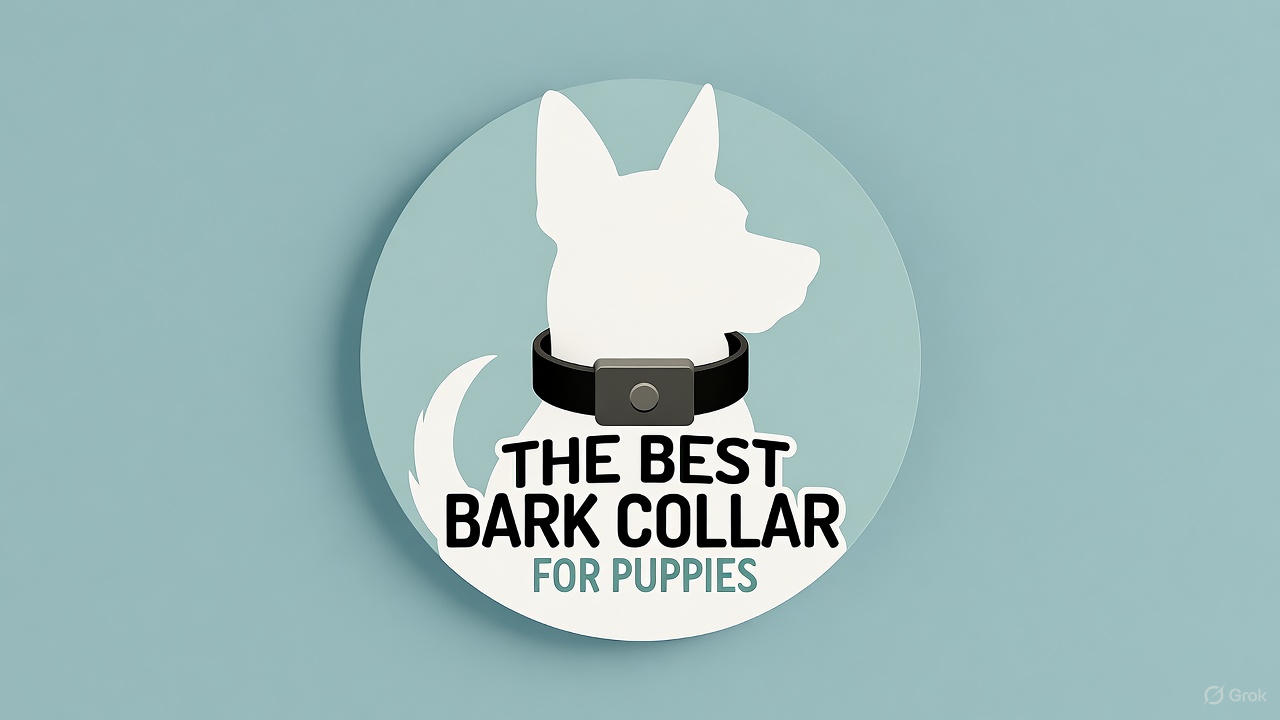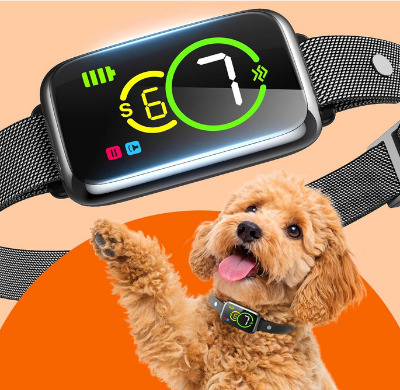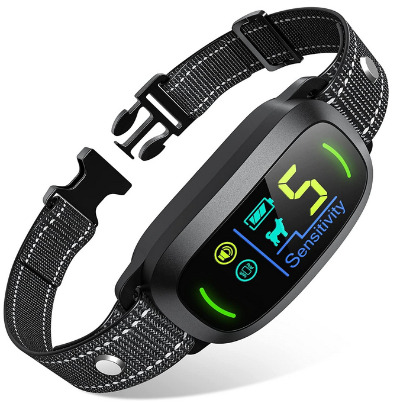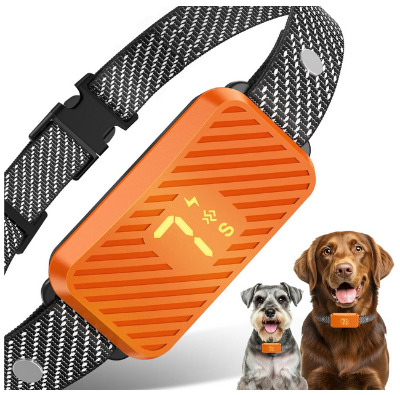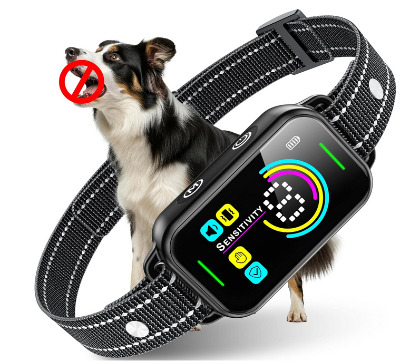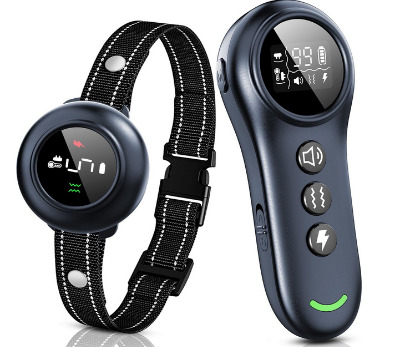5 Best Bark Collar for Puppies In 2025
Training your puppy can be one of the most rewarding experiences of pet ownership. However, excessive barking often becomes a challenge that tests the patience of even the most dedicated dog owners. Finding the right bark collar for your young companion requires careful consideration of safety, effectiveness, and comfort.
This comprehensive guide examines five top-rated bark collars designed to address unwanted barking behaviors in puppies and dogs of all sizes. Each product offers unique features that cater to different training needs and preferences.
Why Puppies Bark and When Training Becomes Necessary
Barking serves as a natural form of communication for dogs. Your puppy might bark to express excitement, alert you to danger, seek attention, or respond to anxiety. While some vocalization remains perfectly normal, persistent and excessive barking can disrupt household harmony and strain relationships with neighbors.
Young dogs often develop problematic barking habits during their formative months. Without proper guidance, these behaviors can become deeply ingrained and difficult to correct later. Bark collars provide a humane training tool that helps puppies learn appropriate vocalization levels without harsh punishment.
The key lies in finding a collar that uses gentle correction methods suitable for your puppy’s age, size, and temperament. Modern bark collars employ progressive training techniques that start with subtle warnings before escalating to more noticeable corrections.
What Makes a Quality Bark Collar for Puppies
Safety stands as the paramount concern when selecting any training device for young dogs. The best bark collars incorporate multiple safety features that prevent over-correction and ensure comfortable wear during training sessions.
Adjustable sensitivity levels allow you to customize the collar’s response based on your puppy’s specific needs. This feature proves especially valuable because puppies vary significantly in their vocal intensity and reaction to corrections. A collar with multiple sensitivity settings lets you start at the lowest level and increase gradually if needed.
The correction methods employed by the collar matter tremendously. Humane training devices rely on sound and vibration rather than static shock. These gentle corrections effectively communicate with your puppy without causing fear or physical discomfort. Beep warnings serve as an initial deterrent, while vibration provides a secondary reminder that discourages continued barking.
Weight and fit considerations become critical for younger, smaller dogs. Heavy or bulky collars can cause discomfort and discourage puppies from accepting the training device. Lightweight designs with adjustable straps ensure proper fit across various puppy sizes and breeds.
Waterproof construction extends the collar’s versatility and durability. Puppies explore their environment enthusiastically, often encountering wet conditions through play, rain, or accidental swimming. A waterproof collar continues functioning reliably regardless of moisture exposure.
Battery life and charging convenience impact the collar’s practical usability. Rechargeable batteries eliminate ongoing replacement costs and prove more environmentally friendly than disposable alternatives. Long battery life between charges reduces maintenance requirements and ensures consistent training availability.
Top 5 Bark Collars for Puppies: Detailed Reviews
1. 1S Stop Barking Smart Dog Bark Collar
The 1S Stop Barking Smart Dog Bark Collar represents an excellent entry point for puppy training. This device prioritizes humane correction methods by relying exclusively on beep and vibration modes. The absence of shock features makes it particularly suitable for young dogs who are just beginning their training journey.
The collar’s ultra-light construction addresses a common concern among puppy owners. Heavy training devices can overwhelm small dogs and create negative associations with the collar itself. The 1S model weighs just enough to stay securely in place while remaining virtually unnoticeable to your puppy during daily activities.
Seven adjustable sensitivity levels provide exceptional customization options. You can start at the lowest setting for timid puppies or increase the sensitivity for more vocal breeds. This range accommodates various barking intensities and allows you to fine-tune the collar’s response as your puppy’s training progresses.
The IP67 waterproof rating ensures reliable performance in all conditions. Your puppy can wear the collar during outdoor play sessions, rainy walks, or even unexpected puddle encounters. The sealed design protects internal components from water damage while maintaining consistent functionality.
The smart detection technology distinguishes between actual barking and external environmental sounds. This intelligence prevents false triggers that could confuse your puppy during training. The collar activates only when it detects genuine barking vibrations from your dog’s vocal cords.
Battery performance delivers several days of continuous use per charge. The rechargeable design eliminates the need for frequent battery replacements, making long-term ownership more economical and convenient.
Best For: Puppies of all sizes who are new to bark collar training and require gentle, shock-free correction methods.
2. Rechargeable Smart Bark Collar for All Dog Sizes
This versatile bark collar adapts seamlessly to puppies and adult dogs across the size spectrum. The universal fit design incorporates an adjustable strap that accommodates neck sizes from small breeds like Chihuahuas to larger breeds such as German Shepherds.
Five adjustable sensitivity levels strike a balance between customization and simplicity. While offering fewer options than some competitors, these five settings cover the practical range needed for most training scenarios. The middle sensitivity level works well as a starting point, with room to adjust up or down based on results.
The beep and vibration correction system follows a progressive training approach. When your puppy barks, the collar first emits an audible warning beep. If barking continues, the device activates a gentle vibration. This two-stage process gives your puppy multiple opportunities to self-correct before receiving the more noticeable vibration reminder.
Smart detection circuitry filters out false triggers from other dogs’ barking or household noises. The collar’s sensors focus specifically on the vibrations produced when your puppy vocalizes, ensuring accurate activation timing.
The rechargeable battery system charges fully within two hours and provides up to two weeks of regular use. This extended battery life reduces charging frequency and maintains training consistency without interruption.
The collar’s sleek black design and compact receiver unit maintain a professional appearance. The streamlined profile sits comfortably against your puppy’s neck without the bulky appearance of some training collars.
Best For: Multi-dog households or families planning to use one collar across different sized dogs as puppies grow.
3. Effective Smart Barking Collar in Orange
The vibrant orange color of this bark collar serves both aesthetic and practical purposes. The high-visibility design helps you quickly locate your puppy in outdoor settings, particularly during early morning or evening activities when lighting conditions are less favorable.
Seven sensitivity levels provide granular control over the collar’s responsiveness. This extensive range allows you to make minor adjustments that precisely match your puppy’s barking patterns and training progress. The ability to fine-tune sensitivity proves valuable when dealing with puppies who bark at varying volumes depending on the situation.
Three distinct beep and vibration modes offer different correction approaches. Mode one uses a single beep warning followed by a brief vibration. Mode two employs multiple beeps with progressively stronger vibrations. Mode three delivers continuous vibration for persistent barking episodes. You can experiment with these modes to discover which approach resonates most effectively with your puppy’s learning style.
The waterproof construction maintains performance integrity during wet weather or water play. The sealed design protects sensitive electronics while allowing for easy cleaning with a damp cloth.
Rechargeable battery technology powers the collar for up to 14 days per charge under normal use conditions. A full charge cycle takes approximately two hours using the included USB cable.
The no-bark training system activates automatically when your puppy barks, requiring no manual intervention. This hands-free operation allows the collar to provide consistent correction even when you’re not immediately present.
Best For: Active puppies who spend significant time outdoors and owners who appreciate high-visibility training equipment.
4. DINJOO Smart AI Anti-Barking Training Collar
The DINJOO collar incorporates artificial intelligence technology that learns your dog’s specific barking patterns over time. This advanced feature helps the collar differentiate between problem barking and acceptable vocal communication, reducing unnecessary corrections.
Eight adjustable sensitivity settings represent the widest range among the collars reviewed here. This extensive customization capability accommodates everything from soft whimpers to loud, persistent barking. The granular control proves especially valuable for sensitive puppies who require very gentle initial corrections.
The smart AI system analyzes barking frequency, duration, and intensity to determine appropriate correction levels. Over time, the collar adapts its response patterns based on your puppy’s behavior, creating a personalized training experience.
Beep and vibration modes work in tandem to create effective deterrents without physical discomfort. The beep serves as an acoustic warning that many puppies quickly learn to associate with the need to stop barking. If the vocalization continues, the vibration provides a more compelling reminder.
The dark black finish and compact receiver design create an unobtrusive appearance suitable for any coat color. The lightweight construction ensures comfortable all-day wear without causing irritation or fatigue.
Rechargeable battery performance delivers approximately 15 days of use per charge. The extended battery life accommodates busy schedules and travel situations where charging opportunities might be limited.
Best For: Tech-savvy owners who appreciate AI-enhanced training features and puppies who require highly customized sensitivity settings.
5. 2-in-1 Dog Shock Collar and Bark Collar
This dual-purpose training collar combines automatic bark detection with remote control capabilities. The 2-in-1 design offers maximum versatility for comprehensive puppy training beyond just bark control.
The automatic bark collar function operates independently, detecting and correcting excessive vocalization without manual input. Five adjustable sensitivity levels allow you to calibrate the collar’s responsiveness to match your puppy’s barking intensity.
The remote training feature adds a new dimension to training possibilities. With a 3300-foot range, you can deliver corrections or positive reinforcement signals from considerable distances. This extended range proves invaluable during off-leash training sessions in parks or other open areas.
The remote control offers multiple correction levels, including beep, vibration, and static stimulation options. For puppy training, the beep and vibration settings typically provide sufficient correction without needing to employ static shock features.
IP67 waterproof certification protects the collar against rain, snow, and accidental submersion. Your puppy can wear the device during any outdoor activity without risking water damage.
The rechargeable design applies to both the collar receiver and the remote control unit. Both components charge simultaneously using the included dual charging station. Battery life extends up to two weeks for the collar and several months for the remote under typical use patterns.
The collar’s adjustable strap fits dogs weighing 8 to 120 pounds, making it suitable for puppies who will grow into larger adult sizes. This scalability eliminates the need to purchase multiple collars as your puppy matures.
Best For: Owners seeking a comprehensive training solution that addresses barking issues while also supporting broader obedience training goals.
Comparing Key Features Across All Models
Each bark collar reviewed here brings distinct advantages to puppy training. The 1S Stop Barking model excels in ultra-lightweight comfort and seven sensitivity levels. The universal fit collar balances simplicity with effectiveness through its five-setting design. The orange Smart Barking Collar combines high visibility with three versatile correction modes.
The DINJOO AI collar stands out for its learning capabilities and eight sensitivity options. The 2-in-1 combination collar offers the most comprehensive training package with both automatic and remote-controlled features.
Price points vary among these options, with basic models typically costing less than feature-rich alternatives. However, all five collars represent solid value propositions when you consider their quality construction, safety features, and effectiveness in reducing unwanted barking.
Understanding Correction Methods: Beep and Vibration Explained
Modern bark collars have evolved significantly from early training devices. Today’s humane designs rely primarily on acoustic and tactile stimuli rather than painful corrections.
Beep warnings function as auditory cues that puppies quickly learn to associate with their barking behavior. The sound itself doesn’t cause discomfort but serves as a consistent signal that barking has been detected. Many puppies respond to beep warnings alone after several training sessions.
Vibration correction provides a more noticeable sensation that captures your puppy’s attention without causing pain. The gentle pulsing feels similar to a cell phone’s vibration mode. This tactile feedback interrupts the barking pattern and encourages your puppy to pause and reconsider their behavior.
Progressive correction systems start with the least intensive method and escalate only if needed. This graduated approach gives your puppy multiple chances to respond to gentle reminders before experiencing stronger deterrents.
How to Introduce Your Puppy to a Bark Collar
Successful bark collar training depends heavily on proper introduction and consistent use. The first step involves allowing your puppy to inspect and smell the collar while it’s inactive. This familiarization period helps reduce anxiety about the new device.
Place the collar on your puppy without activating it during initial sessions. Let them wear the inactive collar for short periods while engaging in positive activities like play or treats. This association helps prevent negative feelings about wearing the collar.
After your puppy accepts wearing the collar comfortably, activate it at the lowest sensitivity setting. Monitor their response during the first few barking episodes. You want to see acknowledgment of the correction without signs of fear or excessive stress.
Gradually increase sensitivity levels only if your puppy doesn’t respond adequately to lower settings. Some puppies modify their behavior quickly, while others require more persistent reminders. Patience during this calibration phase pays dividends in long-term training success.
Consistency matters tremendously in bark collar training. Your puppy should wear the collar during designated training periods every day. Sporadic use confuses the training message and prolongs the learning process.
Combine bark collar training with positive reinforcement for quiet behavior. Praise and reward your puppy when they remain calm in situations that previously triggered excessive barking. This dual approach—discouraging unwanted behavior while rewarding desired behavior—creates the most effective training environment.
Sizing and Fit Guidelines for Puppy Bark Collars
Proper collar fit ensures both safety and effectiveness during training. The collar should sit snugly against your puppy’s neck without causing discomfort or restricting breathing. You should be able to fit two fingers between the collar and your puppy’s skin.
Position the receiver unit centrally on the underside of your puppy’s neck where it can best detect vocal cord vibrations. This placement improves accuracy and reduces false triggers from external sounds.
Check the fit regularly as your puppy grows. Rapid growth spurts during the first six months require frequent strap adjustments. An improper fit can cause the collar to rotate or shift position, reducing its effectiveness.
Trim excess strap length to prevent tangling or catching on objects. Most collars include guides for safely cutting and securing loose strap ends.
Remove the collar during unsupervised periods, especially when your puppy is crated or sleeping. This precaution prevents accidental injury and gives your puppy’s neck skin time to breathe.
Battery Care and Maintenance Tips
Rechargeable bark collars require minimal maintenance but benefit from proper battery care. Charge the collar fully before first use to calibrate the battery management system.
Avoid letting the battery drain completely during regular use. Recharge when the low battery indicator activates or after 10-14 days of use, depending on the model.
Store the collar with a partial charge if you won’t be using it for extended periods. Complete discharge during storage can reduce battery capacity over time.
Clean the charging contacts periodically with a dry cloth to ensure proper connection. Dirt or moisture on these contacts can interfere with charging efficiency.
Use only the manufacturer-provided charging cables and adapters. Third-party accessories might not deliver appropriate voltage, potentially damaging the collar’s electronics.
Cleaning and Hygiene Practices
Regular cleaning maintains your puppy’s collar in optimal condition while preventing skin irritation. Wipe the collar’s exterior with a damp cloth after outdoor use to remove dirt and debris.
The contact points that touch your puppy’s skin require special attention. Clean these areas weekly with a mild soap solution, then rinse thoroughly and dry completely before use.
Waterproof collars can withstand brief submersion for cleaning purposes. However, avoid using harsh chemicals or abrasive materials that might damage protective seals or surface finishes.
Inspect the collar regularly for signs of wear, particularly on the strap and buckle. Replace worn components promptly to maintain security and prevent accidental loss.
Allow the collar to air dry completely if it becomes wet during use. Proper drying prevents moisture buildup that could lead to skin irritation or electronic malfunction.
Safety Considerations for Puppy Training
Bark collars designed for puppies should never cause pain or excessive stress. The training tools reviewed here employ gentle correction methods appropriate for young dogs. However, responsible use remains essential.
Never use a bark collar on puppies younger than six months unless specifically recommended by your veterinarian or professional trainer. Very young puppies lack the cognitive development to associate corrections with their barking behavior.
Limit initial training sessions to a few hours per day. Extended wear time increases the risk of skin irritation, especially as your puppy adjusts to wearing the device.
Monitor your puppy’s emotional response to the collar. Signs of excessive fear, such as cowering, trembling, or trying to remove the collar desperately, indicate that adjustments are needed. Reduce sensitivity levels or pause training to reassess your approach.
Consult with a professional dog trainer if your puppy’s barking stems from anxiety or fear. These underlying issues require behavioral modification techniques that address root causes rather than just symptoms.
Combine bark collar training with environmental management. Identify and eliminate barking triggers when possible, such as visual stimuli from windows or isolation anxiety from being left alone.
Common Training Mistakes to Avoid
Many well-intentioned puppy owners make mistakes that undermine bark collar effectiveness. Starting at too high a sensitivity level often backfires, creating fear rather than learning. Begin at the lowest setting and increase gradually only if necessary.
Inconsistent use ranks among the most common training errors. Your puppy needs consistent feedback to understand which behaviors are acceptable. Wearing the collar only occasionally confuses the training message.
Using the bark collar as punishment for behaviors other than barking corrupts the training purpose. The collar should activate only in response to excessive vocalization, never as a general discipline tool.
Neglecting positive reinforcement leaves a crucial gap in your training approach. While the collar discourages unwanted barking, you must also actively reward quiet behavior to reinforce what you want your puppy to do.
Expecting immediate results sets unrealistic expectations. Bark collar training requires patience and persistence. Most puppies need several days to weeks of consistent training before showing significant behavioral improvements.
Forgetting to adjust the collar as your puppy grows compromises both safety and effectiveness. Regular fit checks ensure optimal performance throughout your puppy’s growth stages.
Long-Term Training Success and Behavior Modification
Bark collars serve as training aids, not permanent solutions. The ultimate goal involves teaching your puppy appropriate vocalization levels so they can eventually function without the collar.
As your puppy demonstrates consistent improvement, begin gradually reducing collar use. Transition to wearing it only in high-trigger situations rather than all day.
Continue reinforcing quiet behavior with praise and rewards even after you’ve stopped using the collar regularly. This positive reinforcement helps maintain the behavioral improvements achieved during training.
Some puppies require longer training periods than others. Factors like breed temperament, age at training start, and environmental stressors all influence the timeline for success.
Persistent barking issues that don’t respond to collar training might indicate underlying problems. Separation anxiety, boredom, or medical conditions can cause excessive vocalization that requires professional intervention.
Making Your Final Decision
The best bark collar for your puppy depends on multiple factors unique to your situation. Consider your puppy’s current size and expected adult size. Think about your training philosophy and comfort level with different correction methods.
Budget constraints might influence your decision, but remember that effective training tools represent an investment in your puppy’s long-term behavior. The cost of a quality bark collar often proves minimal compared to potential fines, strained neighbor relations, or property damage from stressed dogs.
All five collars reviewed here offer humane, effective training solutions. The 1S Stop Barking model provides excellent value for owners prioritizing lightweight comfort and shock-free correction. The universal fit collar suits families with multiple dogs or those planning for puppy growth.
The orange Smart Barking Collar appeals to owners who value visibility and multiple correction modes. The DINJOO AI collar attracts tech enthusiasts seeking adaptive learning features. The 2-in-1 combination collar delivers maximum versatility for comprehensive training needs.
Read customer reviews and manufacturer specifications carefully before making your purchase. Pay attention to feedback from owners with puppies similar to yours in size and temperament.
Complementary Training Techniques
Bark collars work best when integrated into a comprehensive training program. Basic obedience training builds the foundation for good behavior, including appropriate vocalization.
Teaching the “quiet” command gives your puppy a clear instruction to stop barking on cue. Combine verbal commands with the collar’s corrections to strengthen the learning association.
Mental stimulation and physical exercise reduce boredom-related barking. Tired puppies generally vocalize less than those with excess energy. Regular play sessions and puzzle toys provide constructive outlets for your puppy’s enthusiasm.
Socialization experiences help your puppy become confident and less reactive to environmental triggers. Well-socialized dogs typically bark less at unfamiliar sights and sounds.
Environmental enrichment transforms your home into a more engaging space. Background music, safe viewing spots, and rotation of toys maintain interest and reduce stress-related barking.
Real Owner Experiences and Results
Dog owners report positive results with these bark collars when used consistently and humanely. Many puppies show noticeable improvement within the first week of training. The combination of beep warnings and vibration corrections proves effective for most dogs.
Owners appreciate the peace of mind that comes from addressing barking issues before they become entrenched habits. Neighbors often comment on the dramatic reduction in noise levels after just a few weeks of collar training.
Some owners note that their puppies responded to beep warnings alone, never requiring vibration corrections. This outcome demonstrates the value of starting at low intensity levels and allowing your puppy to learn from minimal intervention.
The waterproof features receive consistent praise from owners whose puppies enjoy outdoor activities. The ability to leave the collar on during all activities simplifies training consistency.
Battery life generally meets or exceeds manufacturer claims, with most owners charging weekly or biweekly. The convenience of rechargeable designs eliminates the ongoing expense and hassle of battery replacements.
Your Puppy’s Training Journey Starts Here
Excessive barking doesn’t have to strain your relationship with your puppy or your neighbors. The right bark collar provides gentle, effective guidance that teaches your young dog appropriate vocal behavior.
Each collar reviewed here offers proven effectiveness, humane correction methods, and quality construction. Your choice depends on your specific needs, preferences, and puppy characteristics.
Start your training journey with realistic expectations and commitment to consistency. Combine collar training with positive reinforcement, proper socialization, and basic obedience work. This comprehensive approach creates a well-behaved companion who understands when barking is appropriate and when silence is golden.
The investment you make in proper training during puppyhood pays dividends throughout your dog’s life. A puppy who learns appropriate vocalization levels grows into an adult dog who communicates effectively without disturbing the peace.
Take time to review the features and benefits of each collar carefully. Consider your puppy’s unique personality, your training goals, and your lifestyle requirements. With the right bark collar and dedicated training approach, you’ll help your puppy develop into the calm, well-mannered companion you’ve always wanted.

